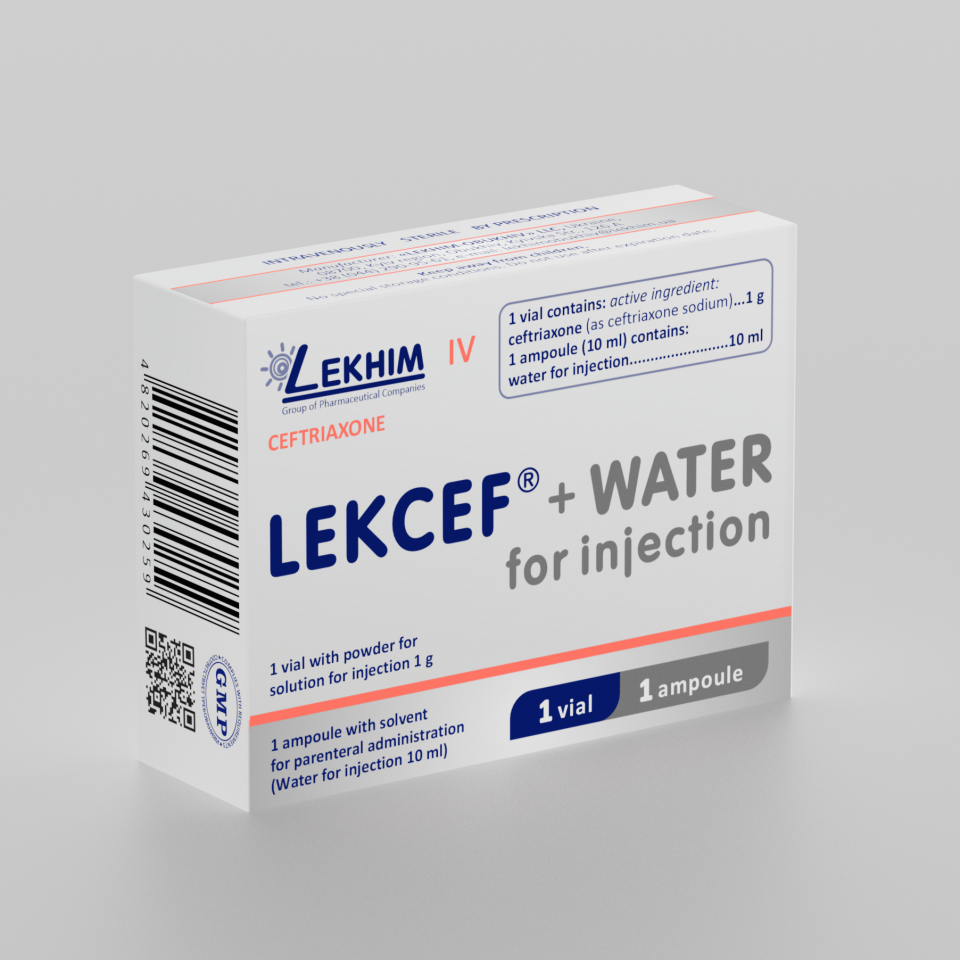
Lekcef + water for injections
General properties
Antibacterials for systemic use. Other β-lactam antibiotics. Third-generation cephalosporins. Ceftriaxone.
Used in the treatment of the following infections in adults and children including term neonates (from birth):
– bacterial meningitis;
– commonly acquired pneumonia;
– hospital acquired pneumonia;
– acute otitis media;
– intra-abdominal infections;
– complicated urinary tract infection (including pyelonephritis);
– infections of bones and joints;
– complicated skin and soft tissue infections;
– gonorrhoea;
– syphilis;
– bacterial endocarditis.
The medicine may be used:
– for treatment of acute exacerbations of chronic obstructive pulmonary disease in adults;
– for treatment of disseminated Lyme borreliosis [early (stage II) and late (stage III)] in adults and children including neonates from 15 days of age;
– for pre-operative prophylaxis of surgical site infections;
– in the management of neutropenic patients with fever that is suspected to be due to a bacterial infection;
– in the management of patients with bacteraemia that occurs in association with, or is suspected to be associated with, any of the infections listed above.
Lekcef® should be co-administered with other antibacterial agents whenever the possible range of causative bacteria would not fall within its spectrum (see section “Special warnings and precautions for use”).
Consideration should be given to official guidance on the appropriate use of antibacterial agents.
Hypersensitivity to ceftriaxone or to any other cephalosporin. History of severe hypersensitivity (e.g. anaphylactic reaction) to any other type of β-lactam antibacterial agent (penicillins, monobactams and carbapenems).
Lekcef® is contraindicated in:
– premature neonates ≤41 week taking into account the period of embryofoetal development (gestational age + chronological age)*;
– full-term neonates (≤28 days of age):
• with hyperbilirubinaemia, jaundice, or who are hypoalbuminaemic or acidotic because these are conditions in which bilirubin binding is likely to be impaired*;
• if they require (or are expected to require) intravenous calcium treatment or calcium-containing infusions due to the risk of precipitation of a ceftriaxone-calcium salt (see sections “Special warnings and precautions for use” and “Undesirable effects”).
* In vitro studies have shown that ceftriaxone can displace bilirubin from its serum albumin binding sites leading to a possible risk of bilirubin encephalopathy in such patients.
Contraindications to lidocaine must be excluded before intramuscular injection of ceftriaxone when lidocaine solution is used as a solvent (see section “Special warnings and precautions for use”). See Instruction for medical use of lidocaine, especially contraindications.
Lekcef® solutions containing lidocaine should never be administered intravenously.
Pharmaceutical characteristics
Main physicochemical properties: white to pale yellow crystalline powder.
Solvent: water for injection, solvent for parenteral administration, 5 mL or 10 mL in ampoule
Main physicochemical properties: clear, colorless, tasteless, and odorless liquid.
Беречь от детей. Никаких особых условий хранения.
